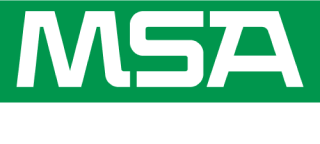
There has been much industry debate over the categorization of Fire and Gas Systems (FGS) as Safety Instrumented Systems (SIS), especially as the concept of functional safety matures in the marketplace and compliance to IEC 61508 / 61511 standards is more prevalent. Fire and gas detection products and technologies are fundamentally different from other forms of instrumentation in a plant. Detector placement and environmental conditions can affect whether the instrument detects a gas leak or flame, even when the detector is functioning properly. Incorrect detector placement and poor environmental conditions can prevent the product from detecting a hazardous gas leak or flame, even when the unit is functioning properly. When a safety hazard is undetected, then the appropriate safety action (shut down, deluge, venting, etc.) cannot be initiated. Because of this, many end-users and system integrators are wondering if the functional safety standards are applicable to a FGS.
A legitimate argument can be made both for and against the classification of a FGS as a SIS. Those that oppose the concept typically believe that because of the inherent limitations of fire and gas detection equipment, a FGS should only augment a plant safety system and not be considered a critical safety function. If a properly functioning FGS comprises a SIL 2 logic solver, a SIL 2 sensor, and a SIL 2 final element, but does not see the hazardous gas or flame or mitigate the hazard, then the SIL 2 risk reduction factor of 100 has not been achieved. For this reason, many people think that too much emphasis and importance is placed on the hardware of the system which can instill a false sense of security. To eliminate this false sense of security, many industry experts feel that a FGS should not comply to the IEC 61508 / 61511 standards. Rather a new performance standard should be developed specifically for FGS and adequately address the issue of detector placement, coverage, and related issues.
The advocates for classifying a FGS as a SIS claim that a system of gas and flame detectors is an effective mitigation layer of protection and should fall within the scope of IEC 61508 / 61511. From MSA’s perspective, if a facility chooses to implement a FGS as a layer of protection while understanding the inherent limitations of the technology, then the system should conform to the guidelines put forth in both 61508 and 61511. A FGS that automatically initiates process actions to help prevent or mitigate a hazardous event can be considered a Safety Instrumented Function (SIF) or SIS. The FGS would need to be composed of appropriate logic solver(s), sensor(s), and final element(s),
However, if there is incorrect placement of the gas or flame detectors and hazardous gases and flames are not adequately detected, then the SIF / SIS will not be effective, regardless of the SIL level of the system. Correct sensor placement is more important than deciding whether a FGS should be SIL 2 or SIL 3. The bottom line is there is no universal, ‘cookie cutter’ solution to safety. The FGS system must be designed based on the unique requirements of each plant and application. Just purchasing a SIL 2 logic solver, a SIL 2 sensor, and SIL 2 final element, does not guarantee a SIL 2 system.
Fire and Gas Systems can mitigate a hazardous event. Risk reduction targets can be established and a FGS can effectively achieve those targets. Fire and gas detection manufacturers are designing their products and processes to comply with IEC 61508 standards. Systems integrators and end-users are designing fire and gas systems by conforming to IEC 61511 standards. Ultimately, the heart of functional safety is preventing and mitigating risk through the safety lifecycle. Fire & Gas Systems can be a critical and successful layer of protection that reduces risk. Therefore, when applied appropriately and with the knowledge of the limitation of the technology, a FGS can successfully be considered a SIS.
Questions about SIL? View the full on-demand webinar, SIL Simplified: Best practices in executing a SIL compliant Fire and Gas System.







